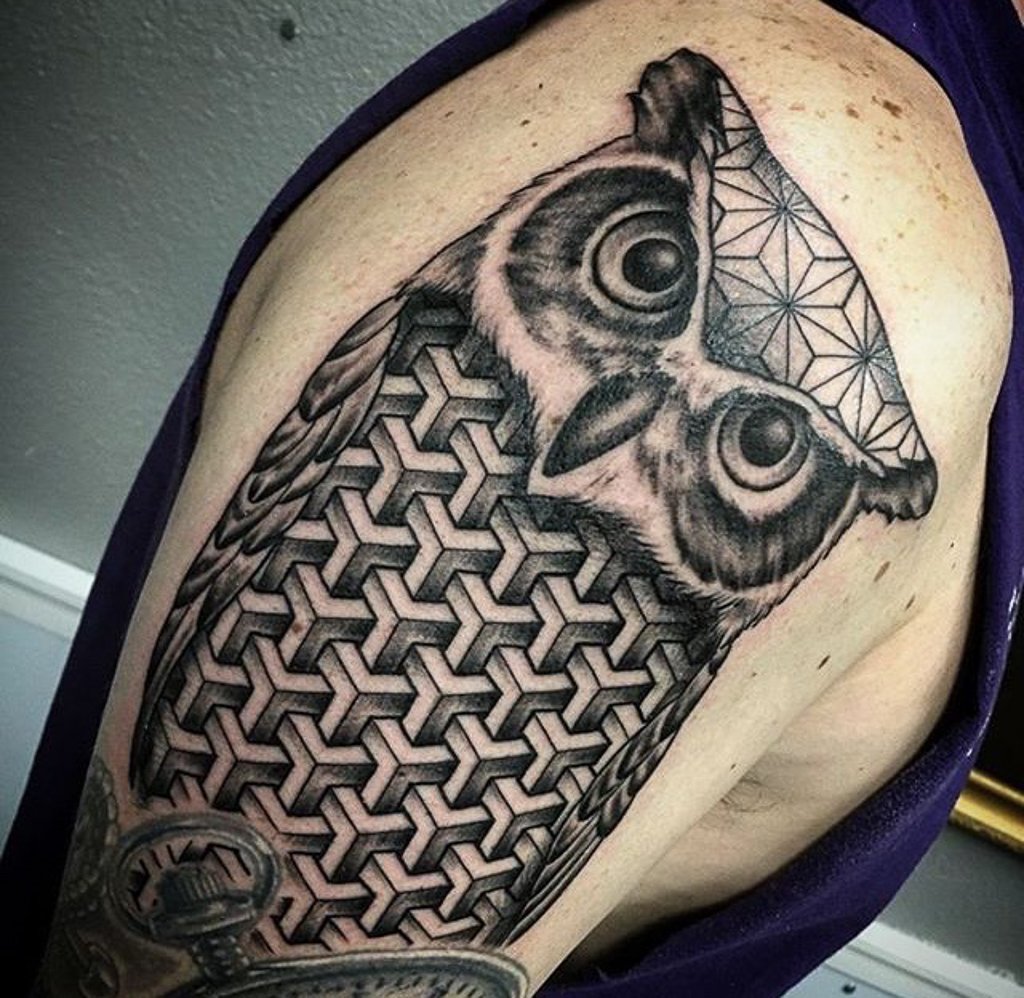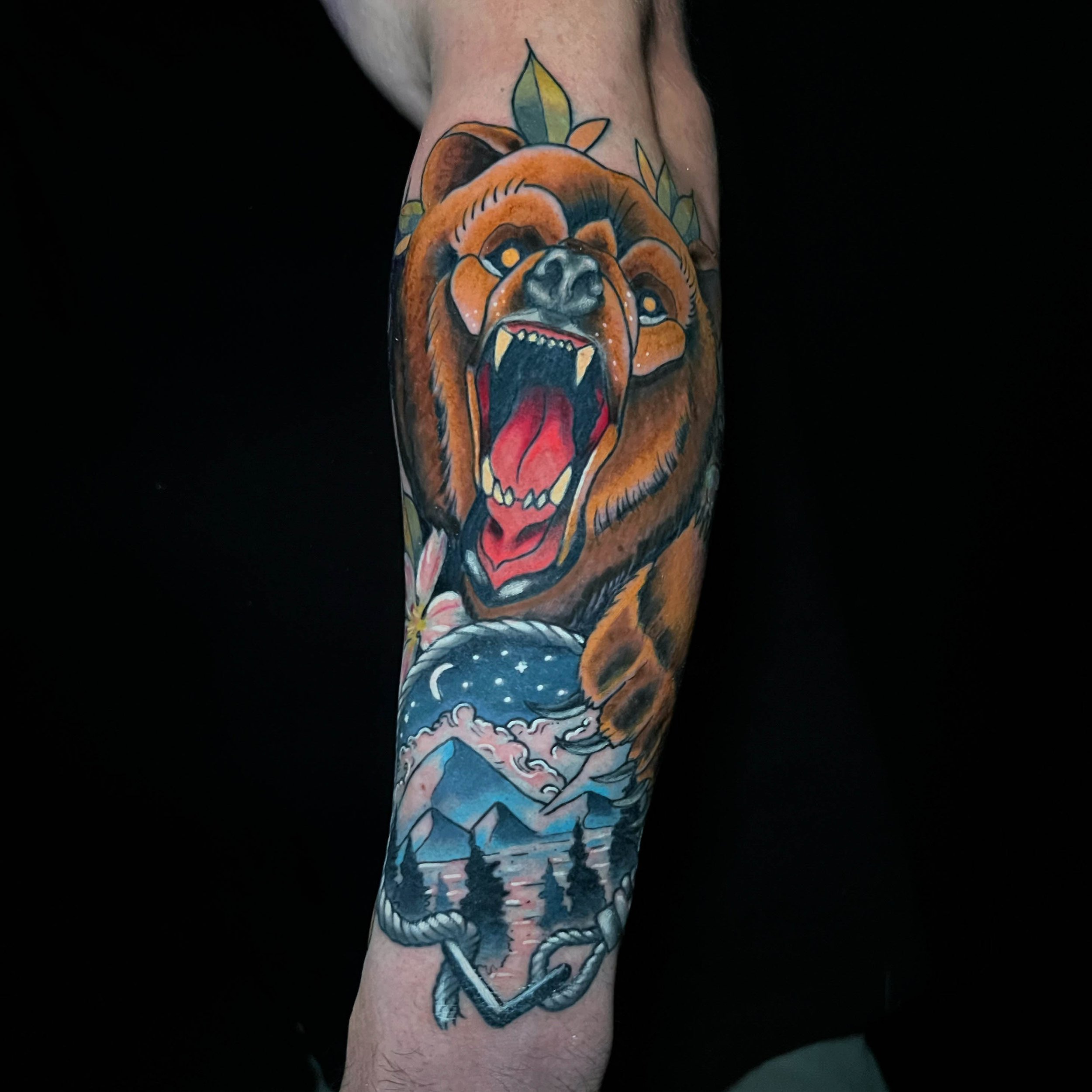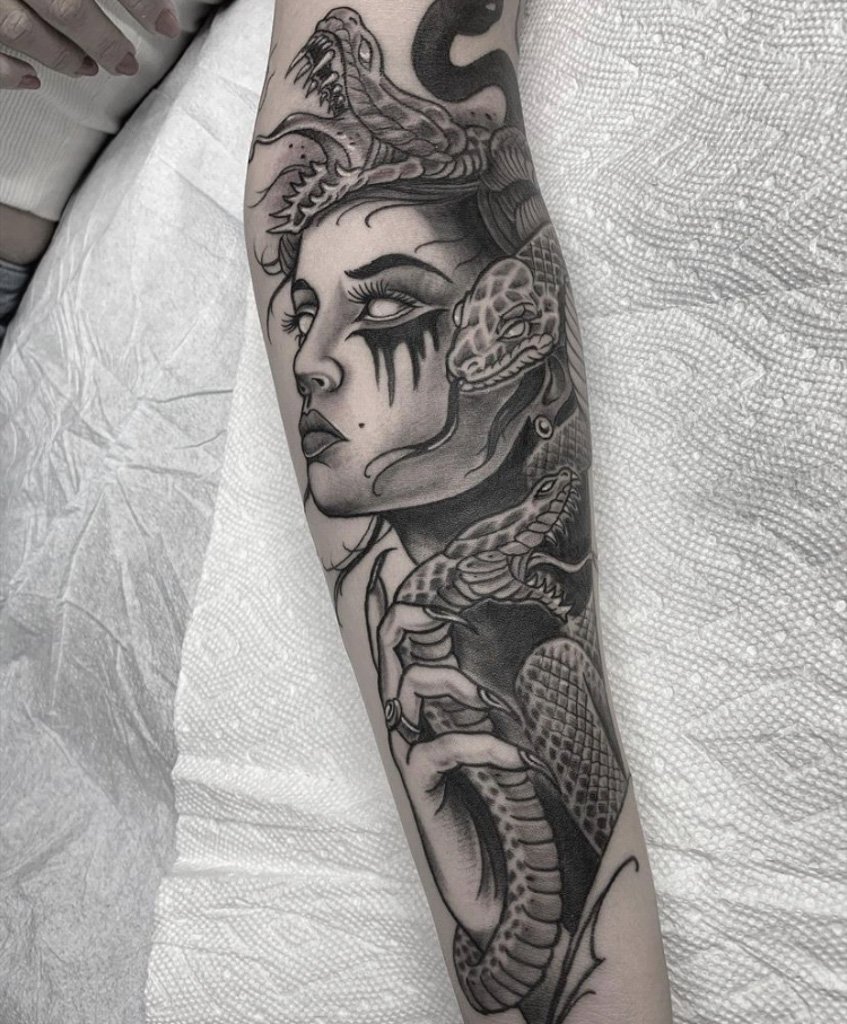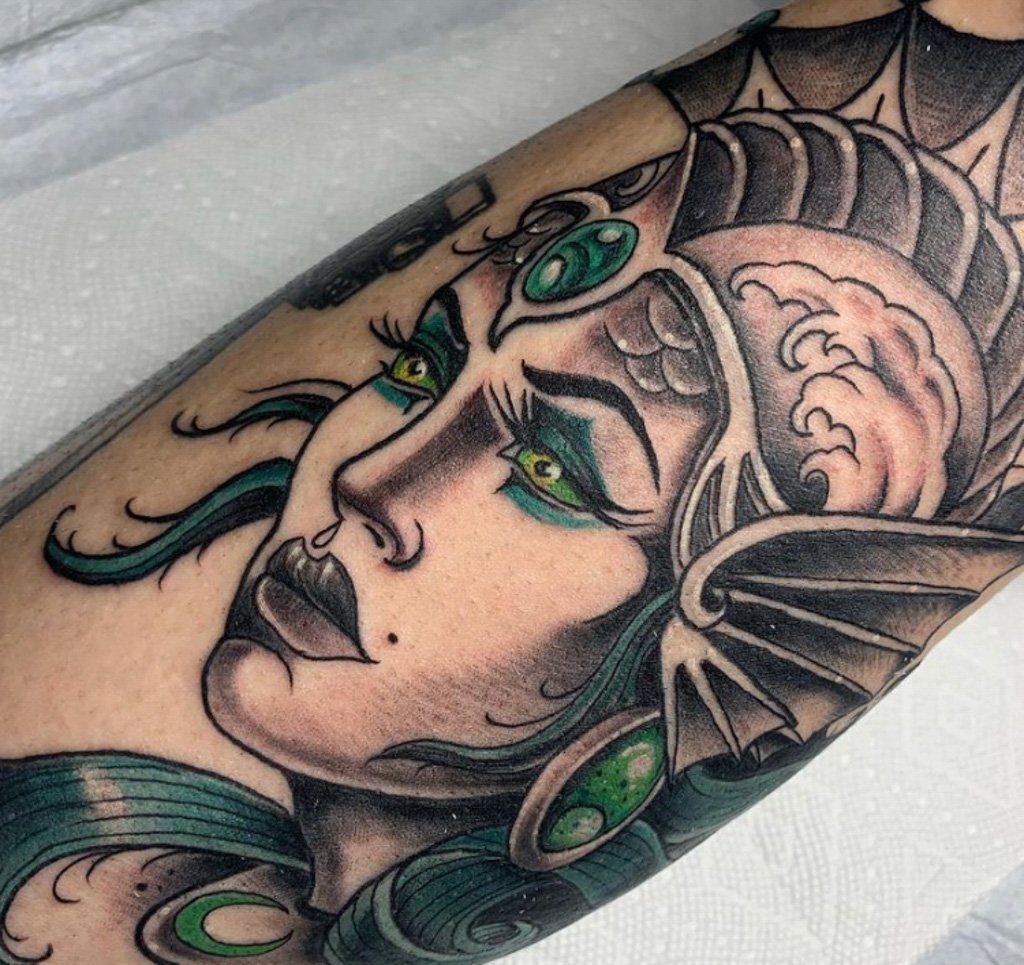Traditional Tattoo Design: Get to Know All About the Unique Art Form
In today's fast-paced, digital age, it's easy to overlook the beauty and significance of ancient art forms. But don’t worry, because we're here to dive deep into the rich history and allure of traditional tattoos. From small traditional tattoos with powerful meanings to the masterful techniques employed by skilled artists, we've got it all covered.
Have you ever found yourself scrolling through social media, admiring the intricate designs and stunning colors of traditional tattoos? Or perhaps you've thought about searching for traditional tattoos near me to find a skilled artist to ink your very own piece of living art. Whatever your motivation, this blog post will open your eyes to the unique art form of traditional tattooing.
In the following sections, we'll explore the origins of traditional tattooing, the techniques employed by artists, and the meanings behind some popular designs. Additionally, we'll share tips on finding the best traditional tattoo artists and studios, and how to care for your beautiful body art.
What are Traditional Tattoos?
Traditional tattoos, also known as old school tattoos, are a style of tattooing that originated in the early to mid-20th century. These tattoos are characterized by their bold lines, vibrant colors, and iconic imagery that often include symbols and designs from various cultures around the world.
The Origins of Traditional Tattooing: A Journey of Culture and Family Tradition Tattoos
Tattooing has been a celebrated art form throughout human history, with various cultures adopting their unique styles and symbolic meaning. Each culture's tattooing style has close ties to family tradition tattoos, embracing the sacred bond between generations.
Polynesian Tattoos: Navigating the Ocean of Family and Tradition
The Polynesian culture spans over a vast area of the Pacific Ocean and is home to some of the oldest tattooing traditions. With their beautiful designs inspired by the ocean, Polynesian tattoos are considered ancestral gifts bestowed by the gods. Serving as an emblematic link to their ancestral heritage, a family tradition tattoo in Polynesian culture ensures that the ancestral spirits will guide its wearers throughout their life's journey. The intricate patterns and symbols often represent strength, courage, family unity, and harmony with nature.
Native American Tattoos: The Colorful Canvas of Tribal Legacy
Across the diverse Native American tribes, tattooing has always been an essential part of cultural identity. Often depicting animals, the natural environment, and celestial bodies, these designs hold profound spiritual significance. A family tradition tattoo in Native American culture carries stories of ancestry, affiliations, and spirituality. By choosing specific symbols and elements, individuals hold onto their family heritage and reinforce the connection with their ancestors' wisdom and guidance.
Japanese Tattoos: The Art of Irezumi and Family Honor
The Japanese art of tattooing, known as Irezumi, is rich in symbolism and revered for its complexity and aesthetic allure. A family tradition tattoo in Japanese culture often features elements such as dragons, koi fish, or even mythological creatures like the phoenix, which represent prosperity, success, and resilience in the face of adversity. These tattoos are not only meant to maintain a visual connection with their heritage but also serve as a badge of honor, reflecting the values and virtues taught within the family.
Celtic Tattoos: The Spirals of Unity and Continuity
Celtic tattoo designs boast a distinct style, characterized by intricate knotwork and spirals that symbolize connection and eternal life. These stunning patterns often portray elements of Celtic mythology, such as the Tree of Life or the emblematic Irish shamrock. In Celtic culture, a family tradition tattoo can represent the cycle of life, leading its bearer on a path of courage and wisdom, reminiscent of their ancestors. These tattoos, filled with storytelling and mysticism, uphold a sense of identity and belonging.
Traditional Tattoo Techniques: From Hand Tapping to Modern Adaptations
The captivating world of tattoos has a rich history that dates back thousands of years. While the art has evolved tremendously in terms of tools, styles, and techniques, the charm of traditional tattoo techniques is still alive and kicking. One can't help but appreciate the skill of an artist creating a traditional tattoo sleeve or wonder, "Where can I find the best traditional tattoo artists near me?" This section delves into the fascinating realm of traditional tattoo techniques, exploring their roots and influences, the tools and materials that make them unique, and their modern adaptations.
Hand-tapping and Hand-poking Techniques: A Closer Look at the Past
When it comes to traditional tattoo techniques, the hand-tapping and hand-poking methods stand out. These ancient techniques, used by communities such as the Polynesians and indigenous tribes across the globe, require immense precision and patience. Hand-tapping involves the use of a small stick, to which a needle is attached, to tap the ink into the skin. This creates intricate designs that can take several sessions to complete, especially for a detailed traditional tattoo sleeve.
Hand-poking, on the other hand, involves using a needle attached to a long stick to gently poke the ink into the skin. While it may sound excruciating, many people who have experienced it claim it's less painful than using a machine.
Traditional Tattoo Tools and Materials: A Tribute to Art and Culture
The tools and materials used in traditional tattooing are as diverse as the cultures they represent, making them a tangible connection between the artist and their heritage. For example, traditional Samoan tattoos are applied using a carved bone or tortoiseshell comb, while ancient Japanese tattooing employed a unique set of needles called "hari."
These traditional tools do more than create captivating designs; they forge a deep bond between the artist and their roots. With every stroke, the traditional tattoo artists not only create a work of art but pay homage to the generations-long traditions of their ancestors.
Modern Adaptations of Traditional Techniques: Meeting in the Middle
While the world of tattooing has come a long way with the introduction of state-of-the-art machines, the love for traditional techniques is far from fading. In fact, many modern tattoo artists have found a way to incorporate these ancient methods into their work. By doing so, they have crafted an extraordinary blend that marries the precision of contemporary tattooing with the soul of traditional techniques.
Today's traditional tattoo artists are uncovering a whole new realm of possibilities in the world of body art. Many people, intrigued by the mystique of these age-old methods, are on a quest to find talented traditional tattoo artists near them. The result? A growing body of stunning, culture-rich ink that tells the stories of its artists and wearers alike.
How to Prepare for a Traditional Tattoo Session
So, you've finally taken the plunge and decided to get inked with a beautiful design from one of the top American traditional tattoo artists near me. You've found an extraordinary design that you adore, and you're thrilled about the prospect of showing it off. Whether you're going for a grand statement piece or just adding to your collection of small traditional tattoos, there are several things you need to know to make sure your experience is as smooth and enjoyable as possible.
Pre-session consultation
Before booking an appointment, it's essential to have a consultation with your chosen American traditional tattoo artist to discuss your desired design and their artistic style. This one-on-one time allows you to get to know your tattoo artist, explain your ideas, and make sure your vision aligns.
Don't worry if you don't have every detail figured out yet! Your artist will be more than happy to hear out your vague musings and help you polish up the final design. Plus, you'll also have the chance to discuss the size, placement, and even color of your small traditional tattoo collection.
Health and safety considerations
Your tattoo session will be a lot more enjoyable when everything is as clean and hygienic as possible. Make sure the studio you visit is licensed and well-regarded – since tattooing involves breaking the skin, it's vital to ensure that everything's sterile to prevent infection.
In the days leading up to your appointment, prioritize self-care, and remember to stay hydrated. Moisturize the area that you'll be getting tattooed to ensure that your skin is in tip-top shape. Additionally, make sure to get a good night's sleep and eat a solid meal beforehand.
If you have any allergies or sensitivities, it's essential to discuss them with the artist in advance. You want to avoid any unpleasant surprises, after all!
What to Expect During the Tattoo Session
Once you've checked off everything on your pre-session checklist, it's time to get inked!
You'll be spending a good amount of time with your tattoo artist, so relax, engage in friendly banter, and let their creative expertise guide you. Trust your American traditional tattoo artist, and don't be afraid to ask any questions or voice any concerns that pop up during the process.
As for the pain, it's no secret that tattooing can be a bit uncomfortable – but it's also a rewarding experience. Many small traditional tattoos can be completed relatively quickly, and your artist will help you manage the pain by adjusting the pace or recommending breaks.
If you feel overwhelmed, remember to take deep breaths and focus on the fantastic piece of art that will soon adorn your body. You've got this!
Frequently ASKED questions
-
A: Traditional tattoos follow specific rules concerning design, placement, and cultural significance. These rules vary across cultures but generally include: adhering to traditional designs that hold symbolic meanings, consulting with a skilled traditional tattoo artist, respecting cultural boundaries and permissions, and ensuring proper placement based on personal and cultural relevance
-
A: A 3 dots tattoo, also known as "mi vida loca" or "my crazy life," typically symbolizes a connection to gang culture, particularly in the context of Hispanic gangs in the United States. It represents the wearer's commitment to living a gang lifestyle, often signifying the three paths: prison, hospital, or death. However, its meaning can vary depending on cultural or personal interpretations.
-
A: Tattoos that last longer are typically done with high-quality ink, placed in areas with less sun exposure and minimal skin stretching, and feature solid colors or black and grey designs. Proper aftercare and maintenance also contribute to their longevity.
READ MORE…
Check out these black traditional tattoo ideas & meanings you'll love.
Here are 6 traditional tattoo styles from around the world (and why you should consider them).
Check out the different styles of traditional tattooing: an overview.
Here’s how to draw traditional tattoos: a comprehensive guide.




